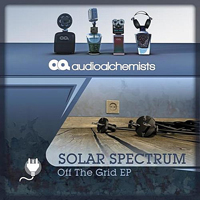
Evolving images for visual neurons using a deep generative network reveals coding principles and neuronal preferences. XDream (Extending DeepDream with real-time evolution for activity maximization in real neurons) is a package for visualizing the preferred input of units in non. Original paper: Ponce, C.R., Xiao, W., Schade, P.F., Hartmann, T.S., Kreiman, G. A good dropout rate is between 0.1 to 0.5 0.3 for RNNs, and 0.5 for CNNs. By visualizing these images, you can highlight the image features learned by a network. Around 2n (where n is the number of neurons in the architecture) slightly-unique neural networks are generated during the training process and ensembled together to make predictions. Deep Dream is a feature visualization technique in deep learning that synthesizes images that strongly activate network layers. “These trippy images were designed by AI to super-stimulate monkey neurons.” ScienceDaily. This example shows how to generate images using deepDreamImage with the pretrained convolutional neural network GoogLeNet. “The brain is adapting to its environment and encoding ecologically significant information in unpredictable ways.” “We are seeing that the brain is analyzing the visual scene, and driven by experience, extracting information that is important to the individual over time,” says Ponce. The algorithm was developed by Will Xiao in the laboratory of Gabriel Kreiman at Children’s Hospital and tested on real neurons at Harvard Medical School.įrom this study, the researchers believe they are seeing that the brain learns to abstract statistically relevant features of its world. Please check the tutorial TikZ shapes: circle for more details.

XDream can visualize the features preferred by units in neural networks. Drawing a circle in TikZ can be achieved using a node command with draw and circle options. At first, the images looked like noise, but gradually they changed into shapes that resembled faces or something recognizable in the animal’s environment, like the food hopper in the animals’ room or familiar people wearing surgical scrubs. a particular unit in the network, the average activity of all units in a given. Images created by Google’s Deep Dream neural network, which creates the trippy imagery the company calls Inceptionism, has already been sold at galleries and displayed at art exhibitions. It goes through a series of images over the course of minutes, mutates them, combines them, and then shows a new series of images. The XDREAM algorithm uses the firing rate of a neuron to guide the evolution of a novel, synthetic image.


 0 kommentar(er)
0 kommentar(er)
